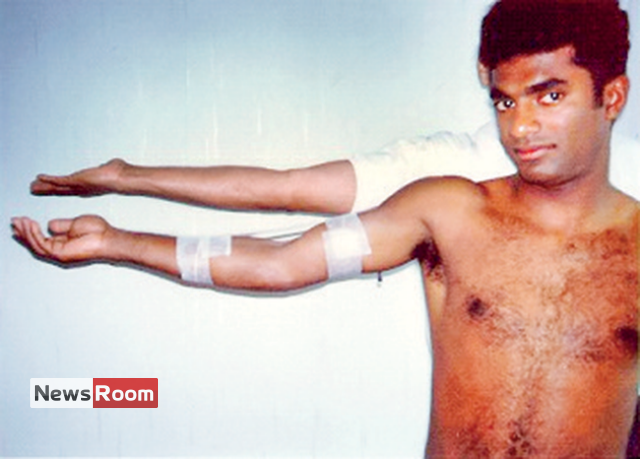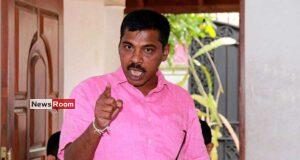By Thalif Deen
NEW YORK –The crisis in Gaza has triggered a negative fallout on some of the prestigious American universities, including Harvard, Columbia, University of Pennsylvania and New York University, where Jewish philanthropists who doled out multi-million-dollar donations are now threatening to cut off funding accusing these universities of failing to take a strong stand supporting Israel in its ongoing war with Hamas.
These universities have suddenly become veritable battle grounds, with hundreds of pro-Palestinian and pro-Israeli students demonstrating inside and outside campuses.
But politics aside, there is also a lighter side of life on American campuses, which I experienced at Columbia University in the 1970s when I was on a State Department Fulbright grant.
I arrived in New York with a degree of trepidation because my colleagues at Lake House, cautioned me, perhaps half-jokingly, that Fulbright grants were given only to “half-bright students”. Mercifully, it wasn’t so.
For starters, I was terrified of the hazards of subway travel and scared of the impending winter weather. When I complained about the frigid weather on my first-ever winter in New York, a wise-cracking colleague gave me a piece of advice: “The best remedy is to curl up in bed with a good book– or with someone who has read one”.
Meanwhile, one of the weekly rituals of University life in the US are the BYOB (bring your own booze) parties either on Friday or Saturday nights — or on both nights either on campus or in dorms, including International House, where I lived for more than two years.
I told one of my colleagues that BYOB did not mean anything to me since I had never touched liquor all my life —and the only beer I drank was ginger beer. “That’s OK”, he said, ‘For you, BYOB means Bring Your own Blonde or Bring Your Own Brunette”.
One of the golden rules in journalism (never mind, the one who owns the gold, rules) is to double check the veracity of your story. And in journalism schools they say: “Even if your mother says she loves you, double check the story.”
And every news story should have at least two sources quoted by name best illustrated in a cartoon in New Yorker magazine where the wicked Queen in the Snow White fairy tale, would stand before her magic mirror and ask: “Mirror, Mirror on the Wall, who is the Fairest of Them all?”—”And I want two sources quoted by name.”
In my class, one of the professors was explaining the red-baiting that took place during the late 1940s and 50’s when Senator Joseph McCarthy of Wisconsin, in his crusade against Communism, led a series of investigations and Congressional hearings to reveal – imaginary or real—of Communist infiltration into the US government.
There was hysterical paranoia about “reds” and “Communists” in the deep state. The slogan was “Reds under the Beds”. The extent of McCarthyism was evident, he said, when there were two groups of demonstrators – the pro Communists and the anti- Communists—staging protests and counter protests in Times Square.
When the demonstrations got unruly, the cops dragged some of the protestors from the streets and bodily threw them into Police vans (called paddy wagons) when one of them pleaded: “I am anti-Communist. I am anti-Communist”. And the cop shouted back: “I don’t care what goddam brand of Communist you are”.
In class, we spent hours trying to perfect the lead (the Americans call it the “lede”) in news stories which has to convey the thrust of the story in the first sentence or the first para.
One of the professors quoted the demanding editor (Walter Matthau) in the 1974 Billy Wilder classic “The Front Page” who berates his reporter (Jack Lemmon) for missing the fact that his fictional newspaper “The Examiner” had landed a scoop in tracking down a killer.
Matthau complains he doesn’t see this in the lead while Lemmon responds that it was in the second para. An indignant Matthau shouts back: “Who the hell reads the second para (in a news story)?”
We were also told that journalists should not have a “conflict of interest” – political or personal—while covering a news story.
The best anecdote came years later when a New York Times editor was quoted as saying: “I don’t care if my reporters sleep with elephants – as long as they don’t cover the circus”.
There was also a longstanding myth that journalists can do no wrong –- and newspaper editors back home usually have the last word responding to any denials of a published news item: “We stand by our story” or “This correspondence is now closed”.
Still, we were told about a newspaper in a small town in mid-West USA which erroneously ran an obituary of an ailing town official in the “Deaths” columns. The indignant official called the newspaper editor from his hospital bed to confirm he was still alive and kicking—and demanding a retraction.
“I am sorry”, said the editor,” We usually do not carry any corrections, but we can list your name under our “Births” column tomorrow”.
Unlike Sri Lanka, I realized that Americans were obsessed with first names, and hardly anyone was addressed either by his or her last name or even by initials (one exception was the sport star OJ Simpson, known universally as OJ or Orange Juice).
My byline during my reporting days in Sri Lanka was “T.M.Deen”, which I continued in my early days at Columbia until a professor who kept addressing me as “TM”, queried : “TM, what is your first name?” he asked.
And I told him: “Professor, I have only one name: DEEN, because my parents couldn’t afford more.” “That’s a good one”, he said, as he laughed.
Meanwhile, with the crime rate in New York city being intense in the 1970s, there was an anecdote about a bank robber getting mugged while fleeing to his get-a-way car. That was two robberies for the price of one. A bargain.
Still, despite my nagging fears about muggings and violence in the subways in crime-ridden New York city in the 1970s, I took the liberty to visit Times Square to catch a movie around the third week of my arrival in New York.
I was a longtime movie buff and a some-time movie critic on the Observer and relished my two academic courses at Columbia: “Movie Criticism”, by Professor Judith Crist, film critic for New York magazine and “The History of Film Making” by Professor Andrew Sarris, movie critic for the Village Voice.
So, for starters, I ventured out—all by myself—to see my first movie in New York city. It was a cold wintry evening and I was wearing a heavy overcoat.
As a penny-pinching foreign student, I found that regular movies were cheapest in Times Square – one dollar before 12 noon and $1.75 rest of the day and night (where movies ran round the clock, and where most out-of-town students used to catch a night’s sleep in a back seat of the theater saving hotel costs) compared with $3 tickets at the more comfortable theaters (seats with no bugs) on the east side of Manhattan.
And after the movie, I was waiting on the platform of the Times Square subway station around 10 pm to pick up the number one train to the 116th Street/ Columbia University subway station on Broadway. My dorm, International House, was on 120th street and Riverside Drive, a walking distance from Columbia.
As I was waiting for the train, two New York city cops walked up to me, and one of them put his arms around my shoulder and said: “Let’s take a walk.” I wasn’t told why. I mistakenly thought it was American hospitality at its best. We walked a couple of yards and one of the cops opened a locked door.
At first glimpse, the dimly-lit, windowless room was a scene straight out of a Hollywood crime thriller of the 1940s and 50s. There was just one piece of furniture – a long table with a couple of chairs and a light bulb hanging loose over the table. It was reminiscent of a Humphrey Bogart/Edward G. Robinson film noir where the cops took the bad guys to beat the daylights (or was it the s—t?) out of them.
After locking the door, he asked me: “What are your carrying”. I instantly figured what it was all about. But conscious of trigger-happy cops, I instinctively put my hands up, gently unbuttoned my heavy overcoat and showed them a folded curved men’s umbrella in the upper inside pocket.
Perhaps for the cops, looking at my bulging overcoat, it resembled a folding Uzi submachine gun. The cop looked at me, and blurted out a warning: “Don’t carry your umbrella like that – ever again”.
As part of my subjects at Columbia, I opted for a one-month academic course on newsgathering where I would spend time with editors at the New York Times (NYT) sitting-in at editorial meetings where decisions were made on which news stories to cover. So, as advised, I called the NYT and sought an appointment with one of the editors to work out the arrangements.
On the appointed day, I arrived at the NYT office, and introduced myself to the secretary outside the editor’s office. Perhaps there was a breakdown in communication somewhere down the line because the editor rushed towards me, extended his palm, and asked: “You are the Dean of which school at Columbia?” “No, no, no,” I said, “I am not a Dean. I am only a student, and my last name is Deen.” We both stood embarrassed.
A couple of weeks later I wrote a piece for a student newspaper “The Asian Student” run by the Asia Foundation in San Francisco. They ran the story with the headline: ‘FROM A HOODLUM TO A DEAN”.
I picked up about $200 bucks for the story. A lot of moolah for a foreign exchange -starved student in the 1970s.This article contains excerpts from a recently-released book on the United Nations titled “No Comment—and Don’t Quote Me on That” authored by Thalif Deen, Senior Editor at the UN Bureau of Inter Press Service (IPS) news agency. The book is available on Amazon and at the Vijitha Yapa bookshop.








